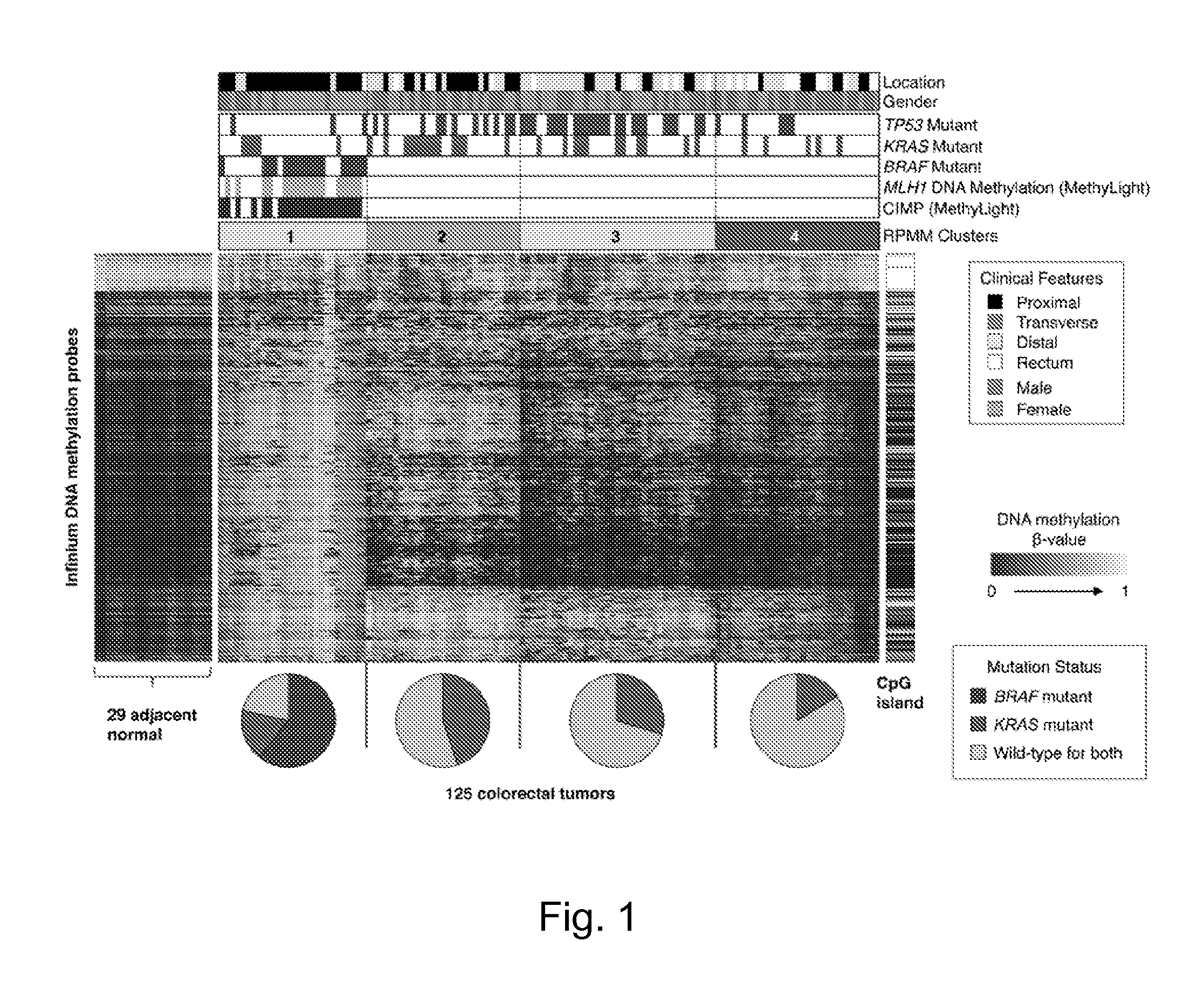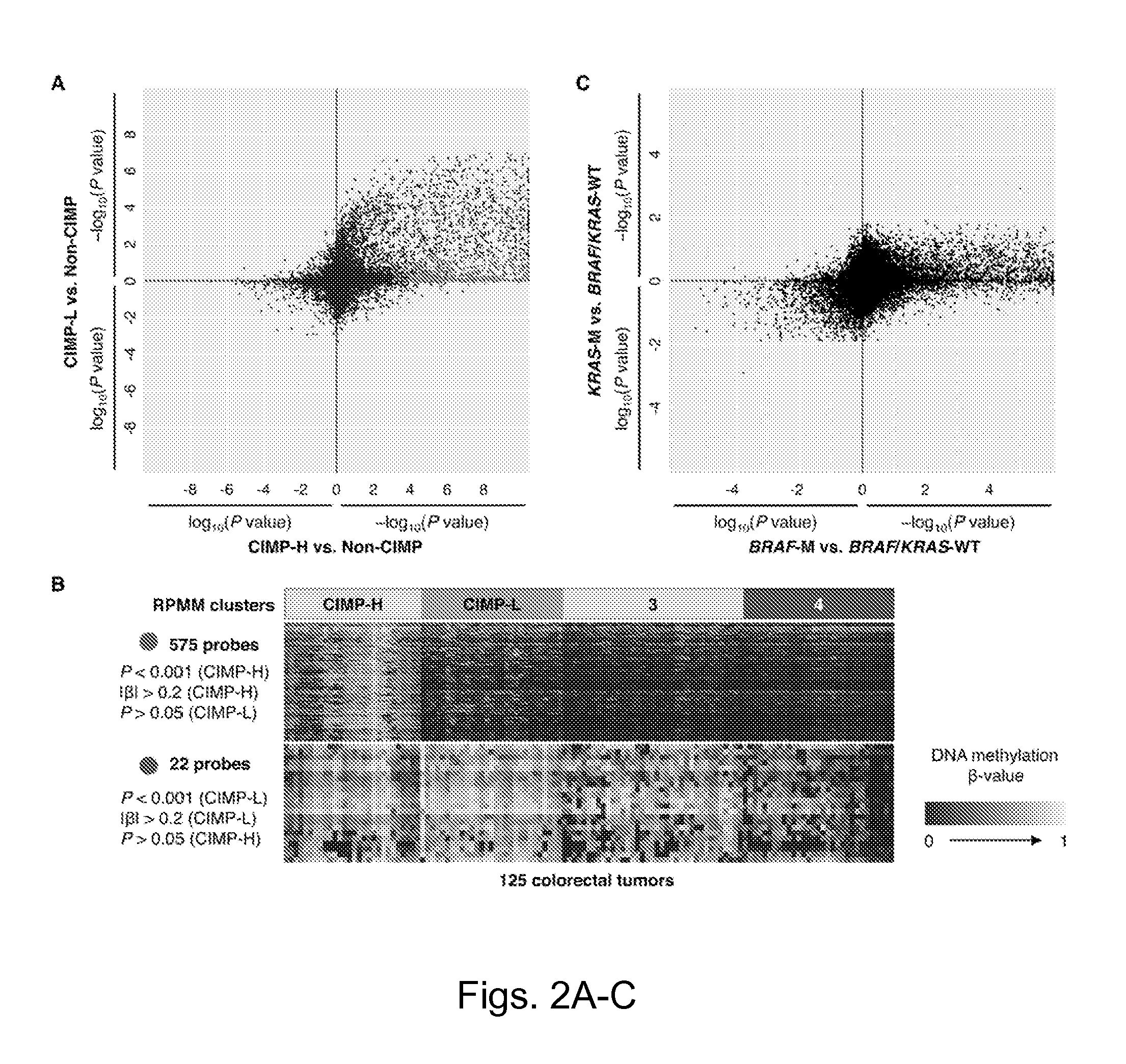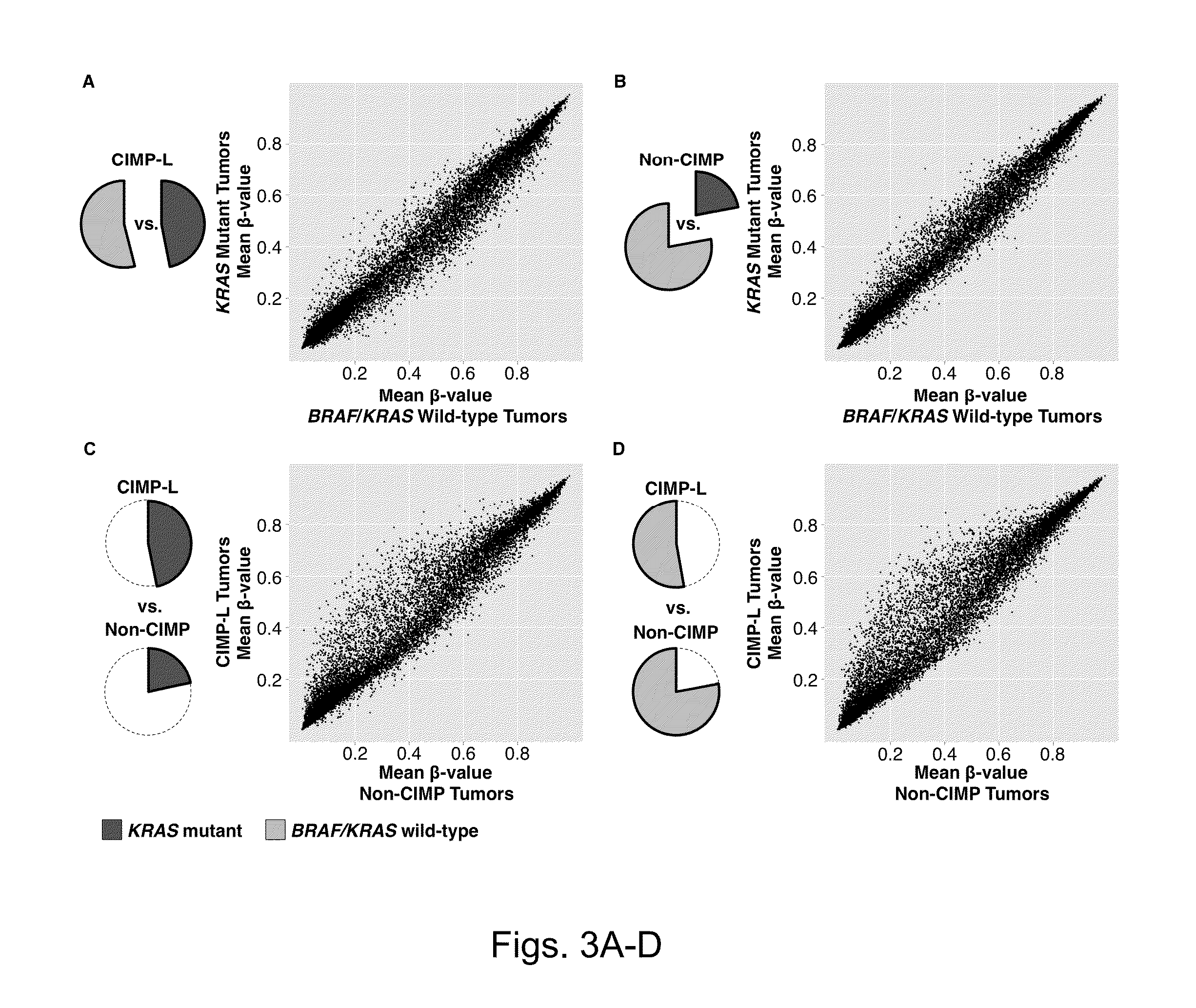Genome-scale analysis of aberrant DNA methylation in colorectal cancer
a colorectal cancer and gene-scale analysis technology, applied in the field of colon cancer, can solve the problems of insufficient exploration of the effects of dna hypermethylation on gene expression in each subtype, the type of dna methylation targeted genes in each subgroup, and the inconfusion of the art with regard to dna methylation subtypes
- Summary
- Abstract
- Description
- Claims
- Application Information
AI Technical Summary
Benefits of technology
Problems solved by technology
Method used
Image
Examples
example 1
Methods
[0073]Primary Colorectal Tissue Sample Collection and Processing.
[0074]Twenty-five paired colorectal tumor and histologically normal adjacent colonic tissue samples were obtained from colorectal cancer patients who underwent surgical resection at the department of surgery in the Groene Hart Hospital, Gouda, The Netherlands. Tissue samples were stored at −80° C. within one hour after resection. Tissue sections from the surgical resection margin were examined by a pathologist (C. M. van Dijk) by microscopic observation. All patients provided written informed consent for the collection of samples and subsequent analysis. The study was approved by the Institutional Review Board of the Groene Hart Hospital in Gouda and the Leiden University Medical Center and University of Southern California. An additional collection of 100 fresh-frozen colorectal tumor samples and four matched histologically normal-adjacent colonic mucosa tissue samples were obtained from the Ontario Tumor Bank ...
example 2
DNA Methylation-Based Colorectal Cancer Classification was Established; Four Distinct Tumor Subgroups were Identified
[0099]Comprehensive genome-scale DNA methylation profiling of 125 colorectal tumor samples and 29 histologically normal-adjacent colonic tissue samples was performed using the Illumina Infinium DNA methylation assay, which assesses the DNA methylation status of 27,578 CpG sites located at the promoter regions of 14,495 protein-coding genes (Bibikova, 2009) (see working Example 1 above for more details). The mutation status of the BRAF, KRAS, and TP53 genes was also identified in the tumor samples. CRC subtypes were first determined based on DNA methylation profiles in the collection of 125 tumor samples. Probes that might be unreliable (see the Supplemental Methods section) and probes that are designed for sequences on either the X- or Y-chromosome were excluded. The top ten percent of probes with the highest DNA methylation variability based on standard deviation of ...
example 3
The CIMP-H and CIMP-L Subgroups were Characterized
[0109]DNA methylation markers associated with CIMP-H and CIMP-L subgroups were investigated. To accomplish this, the DNA methylation β-values for each probe was compared between CIMP-H and non-CIMP tumors (cluster 3 and 4 combined) as well as the β-values between CIMP-L and non-CIMP tumors using the Wilcoxon rank-sum test. Applicants identified 1,618 CpG sites that showed significant DNA hypermethylation in CIMP-H versus non-CIMP tumors (FDR-adjusted P<0.0001) (FIG. 2A). In contrast, 435 CpG sites were found that are significantly hypermethylated in CIMP-L tumors compared with non-CIMP tumors (FDRadjusted P<0.0001) (FIG. 2A). Substantial overlap was observed between the CIMP-H- and CIMP-L-associated markers, as these appear to exhibit a higher frequency of promoter DNA hypermethylation in both tumor subgroups compared with non-CIMP tumors (FIG. 2A). Interestingly, 20% of CIMP-H-associated CpG sites (318 CpGs) were also found to be me...
PUM
| Property | Measurement | Unit |
|---|---|---|
| Fraction | aaaaa | aaaaa |
| Fraction | aaaaa | aaaaa |
| Fraction | aaaaa | aaaaa |
Abstract
Description
Claims
Application Information
 Login to View More
Login to View More - R&D
- Intellectual Property
- Life Sciences
- Materials
- Tech Scout
- Unparalleled Data Quality
- Higher Quality Content
- 60% Fewer Hallucinations
Browse by: Latest US Patents, China's latest patents, Technical Efficacy Thesaurus, Application Domain, Technology Topic, Popular Technical Reports.
© 2025 PatSnap. All rights reserved.Legal|Privacy policy|Modern Slavery Act Transparency Statement|Sitemap|About US| Contact US: help@patsnap.com



